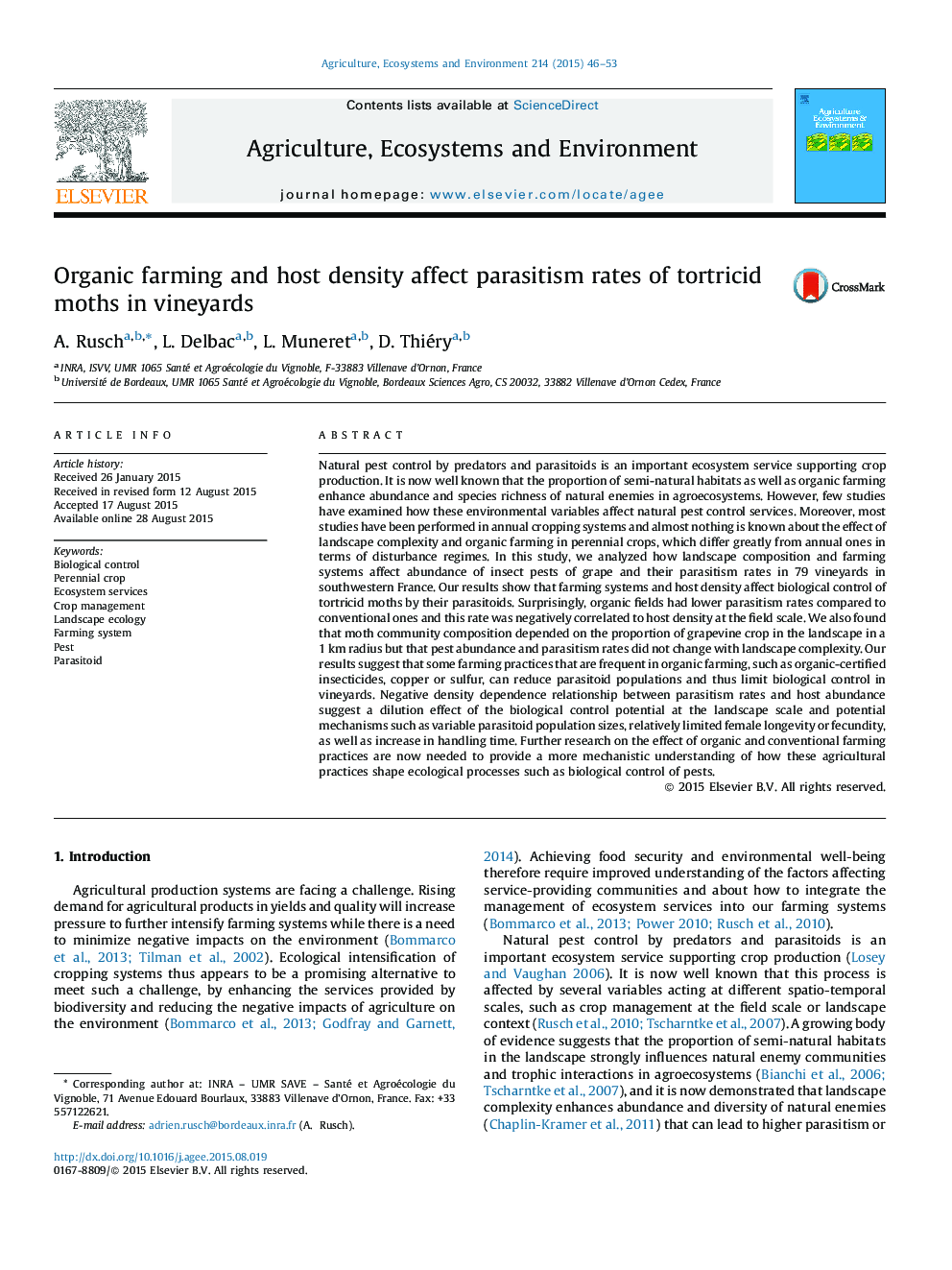| Article ID | Journal | Published Year | Pages | File Type |
|---|---|---|---|---|
| 2413610 | Agriculture, Ecosystems & Environment | 2015 | 8 Pages |
•Our results show that farming system and host density affect top–down control of tortricid moth by their parasitoids.•Organic vineyards had lower parasitism rates compared to conventional ones.•Parasitism rate was negatively correlated to host density at the field scale.•Moth community composition depended on the proportion of crop in the landscape in a 1 km radius.•Pest damage and parasitism rates did not change with landscape complexity.
Natural pest control by predators and parasitoids is an important ecosystem service supporting crop production. It is now well known that the proportion of semi-natural habitats as well as organic farming enhance abundance and species richness of natural enemies in agroecosystems. However, few studies have examined how these environmental variables affect natural pest control services. Moreover, most studies have been performed in annual cropping systems and almost nothing is known about the effect of landscape complexity and organic farming in perennial crops, which differ greatly from annual ones in terms of disturbance regimes. In this study, we analyzed how landscape composition and farming systems affect abundance of insect pests of grape and their parasitism rates in 79 vineyards in southwestern France. Our results show that farming systems and host density affect biological control of tortricid moths by their parasitoids. Surprisingly, organic fields had lower parasitism rates compared to conventional ones and this rate was negatively correlated to host density at the field scale. We also found that moth community composition depended on the proportion of grapevine crop in the landscape in a 1 km radius but that pest abundance and parasitism rates did not change with landscape complexity. Our results suggest that some farming practices that are frequent in organic farming, such as organic-certified insecticides, copper or sulfur, can reduce parasitoid populations and thus limit biological control in vineyards. Negative density dependence relationship between parasitism rates and host abundance suggest a dilution effect of the biological control potential at the landscape scale and potential mechanisms such as variable parasitoid population sizes, relatively limited female longevity or fecundity, as well as increase in handling time. Further research on the effect of organic and conventional farming practices are now needed to provide a more mechanistic understanding of how these agricultural practices shape ecological processes such as biological control of pests.
